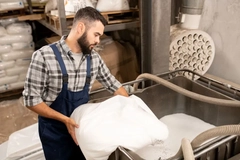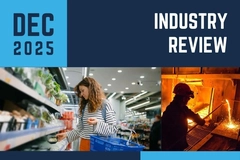International researchers team up to tackle “invisible” river plastic pollution

13 May 2024 --- New research shows plastics exhibit “unique” settling patterns and orientations in rivers due to their geometric anisotropy, revealing a multimodal distribution of settling velocities. The scientists from Cardiff University, UK, Karlsruhe Institute of Technology, Germany and Deltares, the Netherlands claim that current methods to count plastic pollution in rivers are insufficient and do not account for the fragments that sink below the surface.
They say “invisible” plastic particles can be suspended below the water line or sink to the riverbed, potentially harming the river’s ecology. The international team of researchers add, oversights must be addressed to establish baseline river pollution levels and determine the success of ongoing clean-up strategies.
The study, “On the vertical structure of non-buoyant plastics in turbulent transport,” published in Water Research, describes how unseen plastics move in rivers and offers a new counting method.
Lead author James Lofty, a PhD researcher at Cardiff University’s School of Engineering, says: “Our study improves our current understanding of how and where plastic pollution is transported in our rivers.”
“The methods used at the moment rely on counting plastics on the river surface and are therefore not accurately capturing the plastic traveling underwater or settling on the riverbed. This impacts our ability to quantify how much plastic our rivers contain, determine hotspots for plastic pollution and significantly restricts the effectiveness of clean-up strategies.”
 The team dropped 3,000 common plastic pollution items into lab-based water vessels with channels configured to represent real river conditions (Image credit: Daniel Valero, Imperial College London).Sinking plastics test
The team dropped 3,000 common plastic pollution items into lab-based water vessels with channels configured to represent real river conditions (Image credit: Daniel Valero, Imperial College London).Sinking plastics test
The team dropped over 3,000 common plastic pollution items, such as polystyrene cups and other fragments, into large water channels designed to represent real river conditions. Using multiple cameras, they tracked the movements of the samples to millimeter accuracy.
Analysis shows that sinking plastics with different shapes and sizes can be transported in diverse ways in rivers. “In our study, we demonstrate how plastics sink in different orientations. This significantly changes how fast a particle sinks,” Lofty adds. “It was thought that plastics always find a stable sinking orientation and therefore sink at a constant speed.”
“However, we’ve shown this is not the case for fragmented and fractured plastics. This is important, as the sinking rate of a plastic particle is essential for understanding its transport. This finding significantly changes our understanding of how plastics move in rivers.”
“Existing methods can quantify this type of plastic pollution using underwater cameras or sonar, but these cannot practically be deployed in our rivers. Our method can be used in any river because it uses this well-known equation also used for sediments,” details Lofty.
Industry collaboration
Data from the study was used to adapt physics-based equations previously developed for sediments, which can predict the amount of plastic that travels in rivers within a margin of 10% accuracy. The team says their method could offer more accurate estimates of plastic pollution in rivers.
“Two mechanisms that affect the transport of plastics are studied in this investigation. The first relates to the development of complex, multimodal settling configurations. While one mode tends to be more stable than others, these other modes can be metastable and present very different velocities,” write the authors.
The team is further developing this method in real rivers and on different types of plastic under varying conditions. The researchers plan to collaborate with industry to help provide more realistic estimations of plastic pollution in rivers and to implement effective mitigation practices.
Professor Catherine Wilson, one of the paper’s co-authors from Cardiff University’s School of Engineering, says: “Our research illuminates how much plastic litter is sinking to the riverbed and traveling undetected in rivers.
“Combined with our existing knowledge of how sediments move in rivers, our new method could provide a more realistic picture of plastic pollution in our rivers and, most importantly, where to focus the resources of plastic clean-up strategies.”
Edited by Radhika Sikaria










